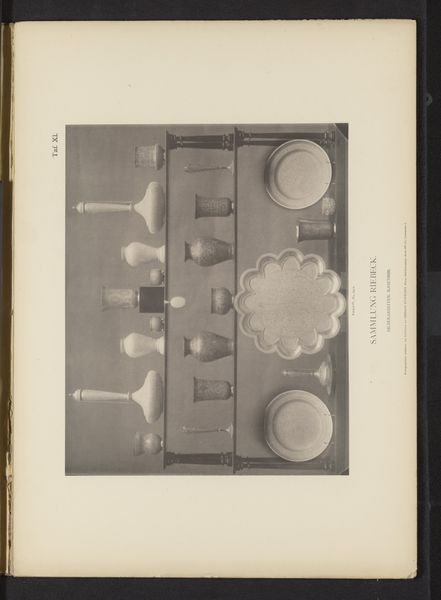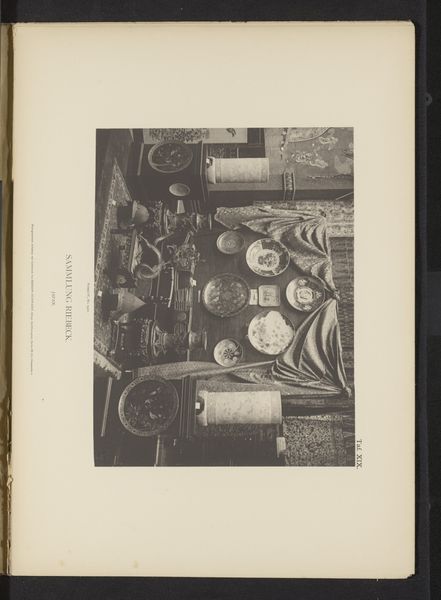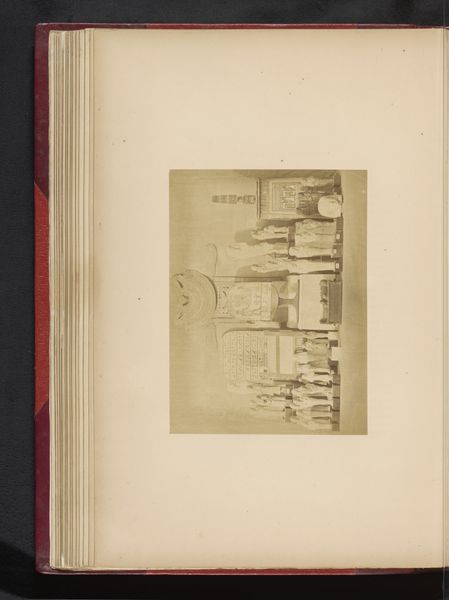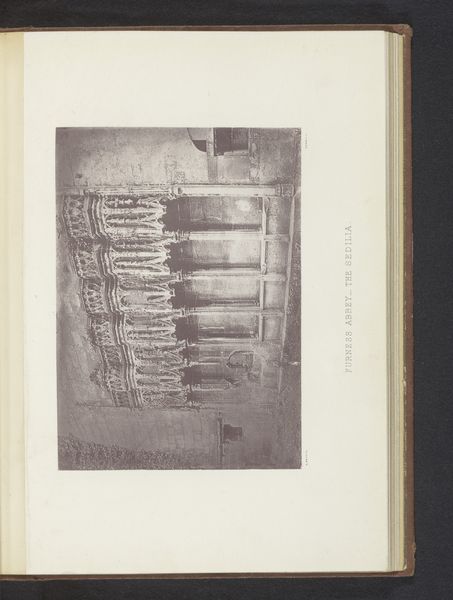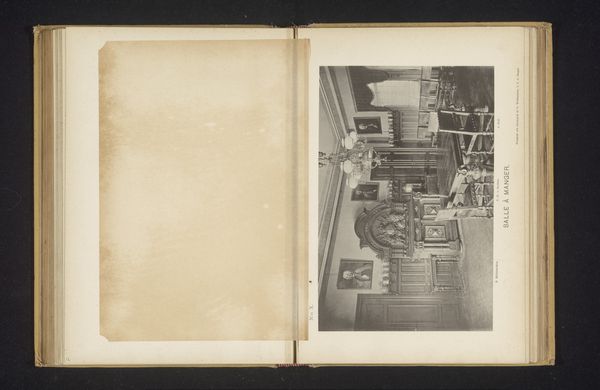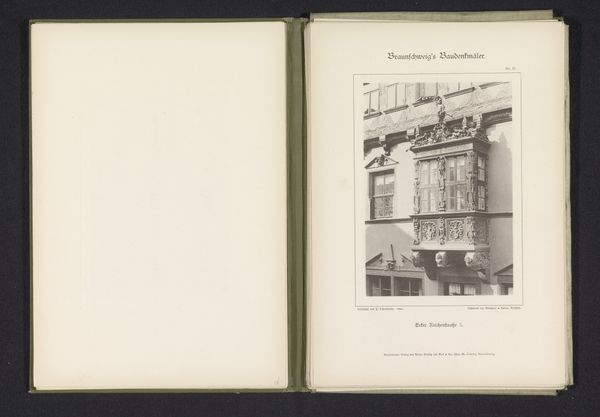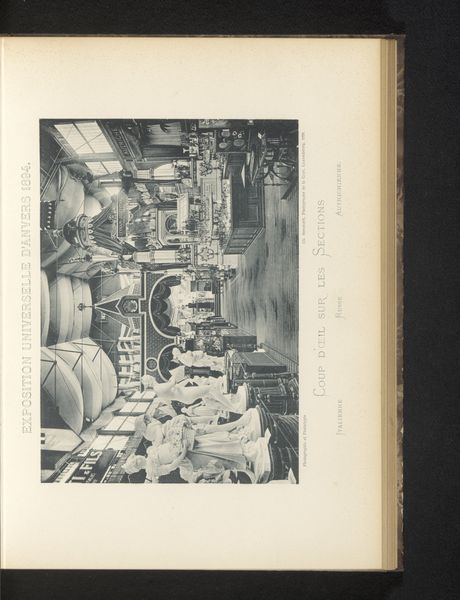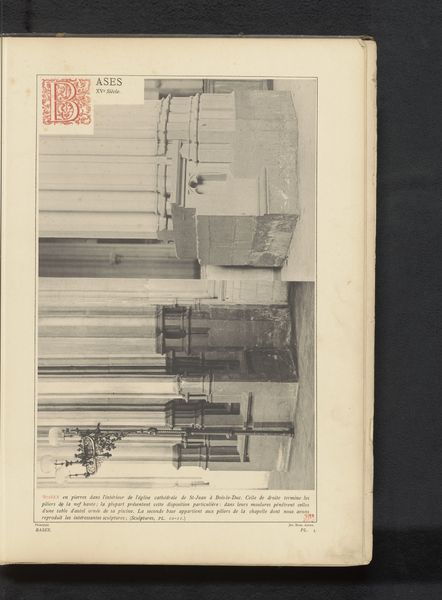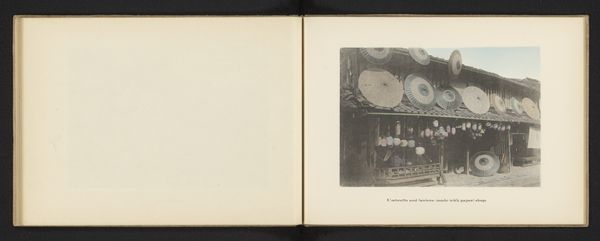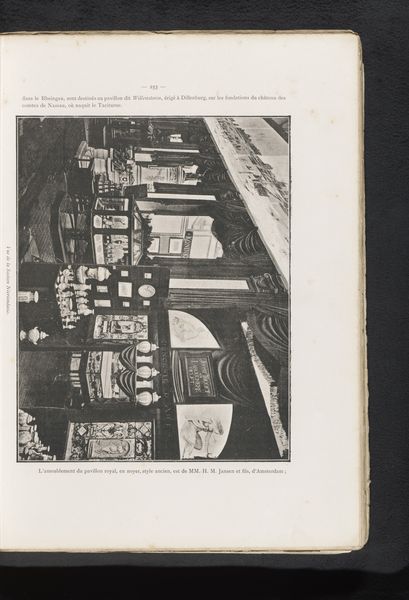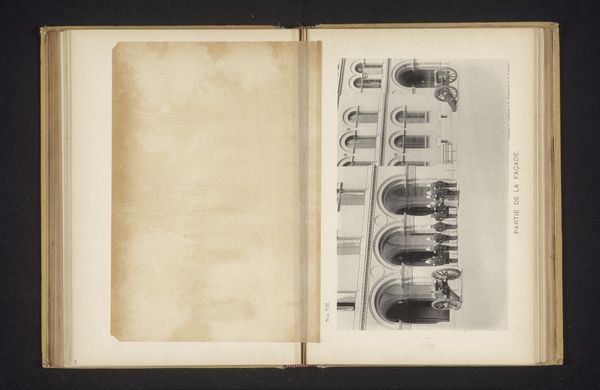
Japans Satsuma-porselein uit de verzameling van Emil Riebeck, op de binnenplaats van het Kunstgewerbemuseum in Berlijn 1884
0:00
0:00
print, ceramic, porcelain, photography, collotype
# print
#
asian-art
#
ceramic
#
vase
#
porcelain
#
photography
#
collotype
Dimensions: height 229 mm, width 344 mm
Copyright: Rijks Museum: Open Domain
Here's a photograph taken by Hermann Rückwardt, capturing Emil Riebeck's collection of Japanese Satsuma porcelain displayed in the courtyard of the Kunstgewerbemuseum in Berlin. Satsuma ware, known for its creamy, crackled glaze and intricate overglaze enamel decoration, embodies a fascinating intersection of craft, design, and materiality. Originally produced in the Satsuma province of Japan, these ceramics gained popularity during the late 19th century, coinciding with Japan's opening to international trade. The elaborate decoration, often depicting scenes from Japanese folklore and history, required skilled artisans and a labor-intensive production process. These ceramics were not merely functional objects; they were commodities produced for a burgeoning global market. The export of Satsuma ware contributed to Japan's economic growth while also shaping Western perceptions of Japanese artistry. Looking closely, one can see the ways in which the making and meaning of these ceramics were deeply entwined with broader social and economic forces, reflecting the complexities of cultural exchange and the commodification of craft traditions.
Comments
No comments
Be the first to comment and join the conversation on the ultimate creative platform.
